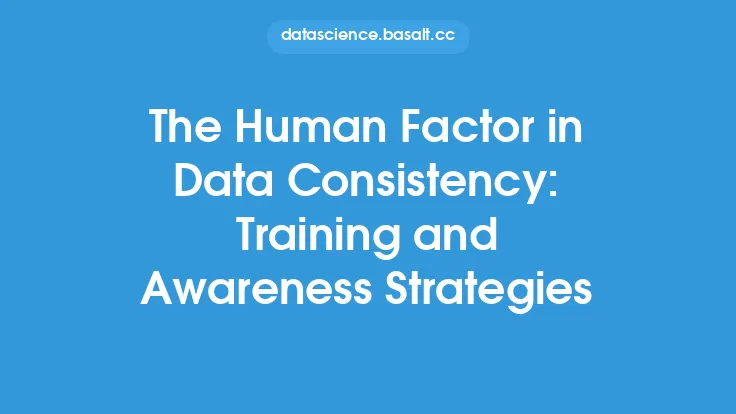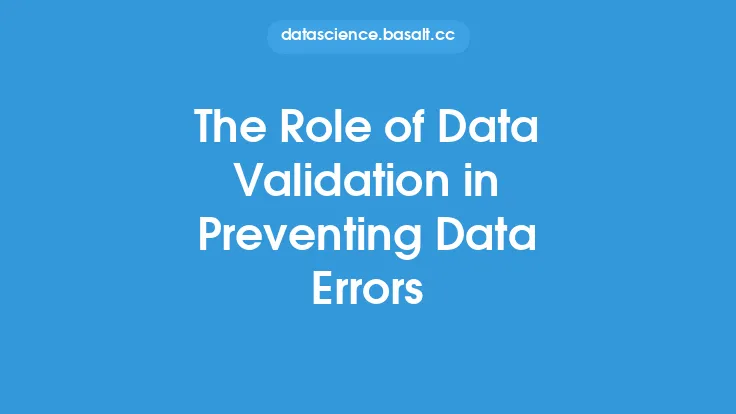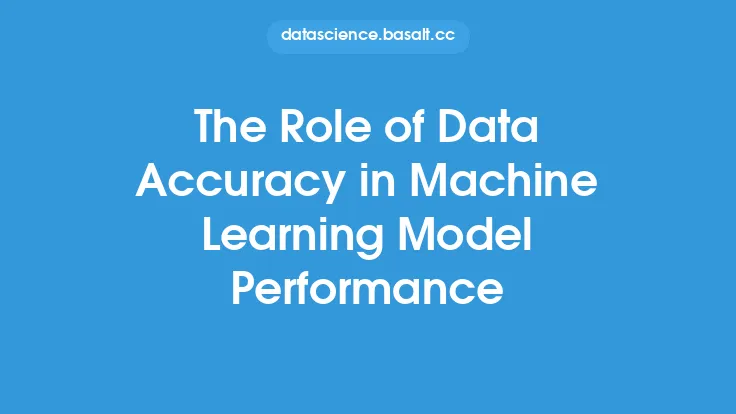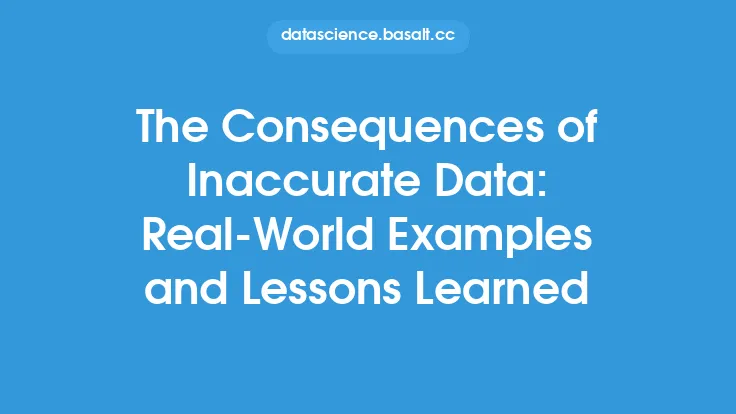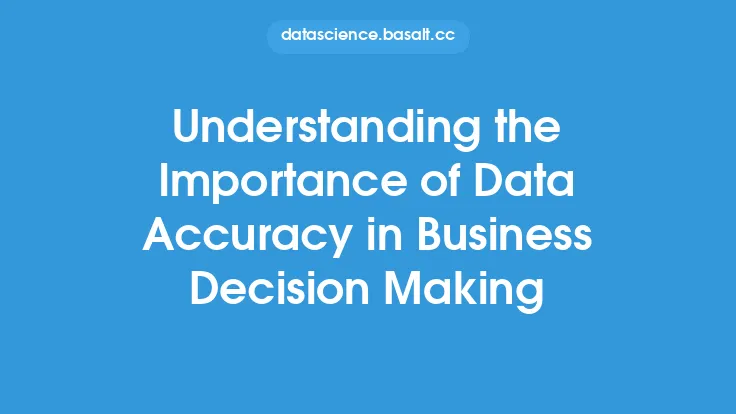Data accuracy is a critical aspect of data quality, and it is essential to understand the human factor that contributes to errors and biases in data. The accuracy of data depends on various factors, including data collection, processing, and analysis. Human involvement in these processes can introduce errors and biases, which can have significant consequences on business decisions, machine learning model performance, and overall data quality.
Introduction to Human Error in Data Accuracy
Human error is a significant contributor to data inaccuracy. It can occur during data collection, data entry, data processing, and data analysis. Human errors can be classified into two categories: systematic errors and random errors. Systematic errors occur due to a flaw in the data collection or processing methodology, while random errors occur due to chance or unpredictable factors. Understanding the types of human errors that can occur is crucial to developing strategies to minimize them.
Sources of Human Error in Data Collection
Data collection is a critical step in the data accuracy process, and it is prone to human errors. Some common sources of human error in data collection include:
- Observer bias: This occurs when the person collecting the data introduces their own biases or expectations into the data collection process.
- Instrumentation bias: This occurs when the tools or instruments used to collect the data are faulty or inaccurate.
- Sampling bias: This occurs when the sample selected for data collection is not representative of the population.
- Data entry errors: This occurs when data is entered incorrectly into a database or spreadsheet.
The Impact of Cognitive Biases on Data Accuracy
Cognitive biases are systematic errors in thinking and decision-making that can affect data accuracy. Some common cognitive biases that can impact data accuracy include:
- Confirmation bias: This occurs when data is collected or interpreted to confirm pre-existing beliefs or hypotheses.
- Anchoring bias: This occurs when data is interpreted based on an initial value or anchor, rather than on its actual value.
- Availability heuristic: This occurs when data is interpreted based on how easily it comes to mind, rather than on its actual frequency or importance.
- Hindsight bias: This occurs when data is interpreted with the benefit of hindsight, rather than based on the information available at the time.
Strategies for Minimizing Human Error in Data Accuracy
To minimize human error in data accuracy, several strategies can be employed. These include:
- Data validation: This involves checking data for errors or inconsistencies before it is used for analysis or decision-making.
- Data verification: This involves checking data against a trusted source to ensure its accuracy.
- Data standardization: This involves standardizing data collection and processing methodologies to reduce errors and inconsistencies.
- Training and education: This involves providing training and education to data collectors and analysts to reduce errors and biases.
The Role of Technology in Minimizing Human Error
Technology can play a significant role in minimizing human error in data accuracy. Some ways in which technology can help include:
- Automated data collection: This can reduce errors and biases associated with human data collection.
- Data validation and verification tools: These can help to identify and correct errors in data.
- Machine learning algorithms: These can help to identify patterns and anomalies in data, and reduce errors and biases associated with human analysis.
- Data quality metrics: These can help to measure and evaluate data quality, and identify areas for improvement.
Best Practices for Data Accuracy
To ensure data accuracy, several best practices can be employed. These include:
- Developing a data quality plan: This involves identifying potential sources of error and bias, and developing strategies to minimize them.
- Establishing data quality metrics: This involves measuring and evaluating data quality, and identifying areas for improvement.
- Providing training and education: This involves providing training and education to data collectors and analysts to reduce errors and biases.
- Continuously monitoring and evaluating data quality: This involves regularly checking data for errors and inconsistencies, and making improvements as needed.
Conclusion
Data accuracy is a critical aspect of data quality, and human error is a significant contributor to data inaccuracy. By understanding the sources of human error and cognitive biases, and employing strategies to minimize them, organizations can improve the accuracy of their data. Technology can also play a significant role in minimizing human error, and best practices such as data validation, verification, and standardization can help to ensure data accuracy. By prioritizing data accuracy and taking steps to minimize human error, organizations can make better decisions, improve their operations, and gain a competitive advantage.
